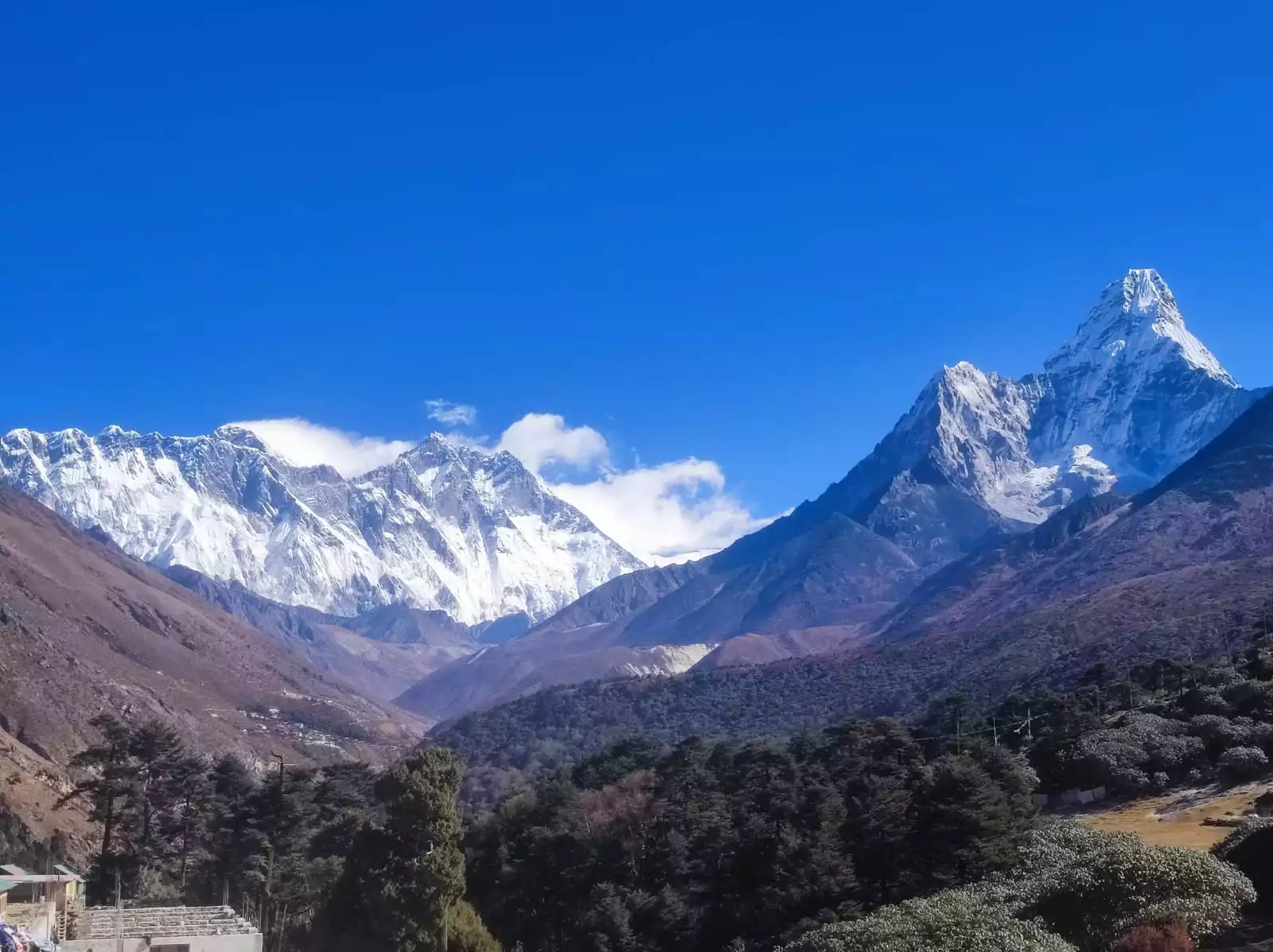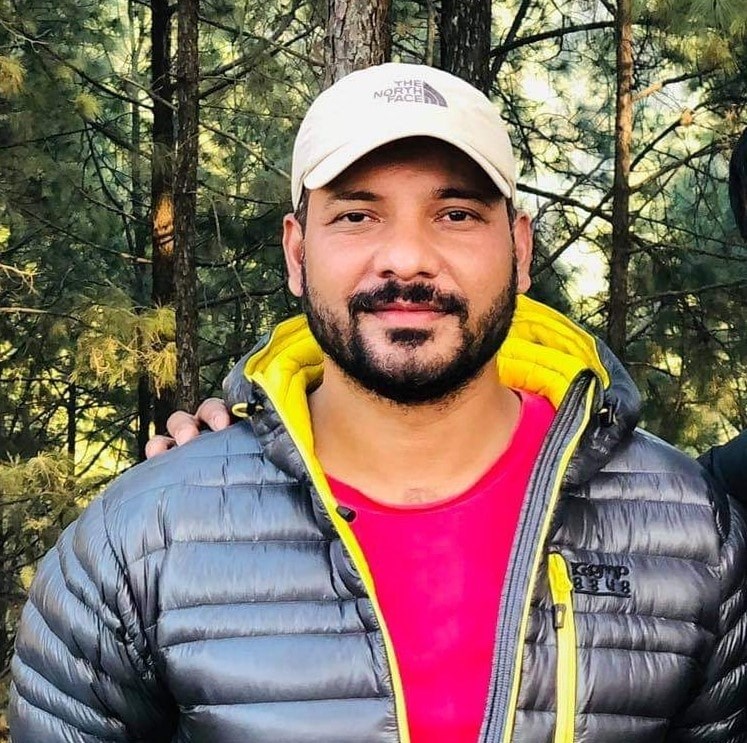Symptoms of altitude sickness during Everest base camp trek shouldn’t be neglected, and be prepared for altitude sickness on the trail to the highest base camp. I have been to Everest 100s times since 2012, and now I work as a trek consultant and make trek itineraries according to circumferences depending upon body fitness and mental preparation.
Table of Contents
Our company wants to serve differently to ensure your safety and other factors while you’re trekking. Getting back to our topic:
What is Altitude Sickness?
Altitude sickness is a broad term with various conditions related to physical changes at higher elevations. It includes AMS and more severe altitude illnesses like High Altitude Pulmonary Edema (HAPE) and High Altitude Cerebral Edema (HACE).
What is Acute Mountain Sickness?
Acute Mountain Sickness is one type of Altitude sickness that happens when the oxygen and air pressure are low at a higher altitude. It also depends upon your body’s acclimation power or capacity to adapt to the situation, so this usually can happen to everyone above 2400m/800ft.
I have been trekking to Annapurna, Everest, and other regions of Nepal, and it can still happen whenever I am not physically or mentally fit. The best and most frequently used way to prevent altitude sickness is to ascend gradually and rest at some point before ascending to a higher altitude.
You can notice on our Everest trekking itinerary we have two acclimation days on Day 3 at Namche Bazaar (How to Reach Namche Bazaar from Kathmandu?) and Day 6 at Dingboche, where we can take a rest or short hike within the surrounding area.
The sea level pressure is 760mmHG. At the Everest Base camp, the barometric pressure is 53kpa (401mmHG), which is around 52% of what it is at sea level. This means there is significantly less oxygen air at Everest Base Camp.
What is High Altitude Pulmonary Edema?
HAPE, known as High Altitude Pulmonary Edema, is more critical than Acute Mountain Sickness. It usually happens due to sudden temperature changes, dehydration, and lack of proper nutrition. The illness will cause the blood vessels in the lungs to squeeze together, increasing the pressure.
The symptoms are blue lips, coughs, fatigue, and breathlessness. There are more complex terms you can read here. It happens only in rare cases, so worrying about it is unnecessary.
What is High Altitude Cerebral Edema?
It is the most critical illness among all altitude sickness. It is also a rare case that happens in the Everest region. The illness is caused by leaky capillaries in the brain, which causes fluid accumulation and swelling. For More Information
6 Preparation Steps For Altitude Sickness During Everest Base Camp Trek
We can take many precautions for altitude sickness while trekking to Everest base camp. Here are the top 6 preparation steps you should take care of while trekking.
Stay Hydrated, Ginger Tea -Coffee, Honey
There are many benefits: Staying hydrated plays such a role in acclimatization at higher altitudes. A hydrated person can adapt to a lower level of oxygen quickly.
While trekking leads to an increase in fluid loss through sweating and breathing, maintaining hydration helps to prevent dehydration, which can negatively impact physical performance, concentration power, and well-being of a person.
Ginger Tea – Coffee: Ginger tea has natural anti-nausea properties, which help prevent altitude sickness and nausea. They also help in warming the body and stay comfortable in cold weather. Having one cup of ginger Tea or coffee daily in the morning helps acclimate properly. Coffee has caffeine, which boosts energy and enhances alertness.
Honey: Honey is a source of simple sugars, primarily glucose and fructose. These natural ingredients provide quick and easily digestible energy. It also contains antioxidants, which help reduce oxidative stress caused by physical exertion at higher altitudes. Lastly, honey helps soothe the throat and can be beneficial in the dry and cold mountain air.
Go Wisely & Acclimizate Properly
Gaining altitude faster encourages altitude sickness, so it’s better to trek steadily and slowly. Also, coming from different weather and climate, it is necessary to acclimate. It helps in adopting a new climate. While trekking to Everest base camp, one can have two or three days of acclimation to prevent altitude sickness.
Usually, we have acclimatization on namche bazaar and dingboche, but depending upon the trekkers’ well-being and physical and mental preparation, trekkers can have more acclimation days upon consulting.
Someone who isn’t prepared physically and mentally can also go to Everest base camp via Everest Helicopter Tour Via Kathmandu.
No To Cigarettes and Alcohol During Everest Base Camp Trail
There are many benefits of not consuming cigarettes and alcohol during trekking. Our trekking agency also advises not to consume on your trekking days, and here’s why
At higher elevations on Everest base camp trail, where oxygen levels are low, your body is already under pressure. Smoking and alcohol can additionally contribute to respiratory and cardiovascular strain and increase the risk of altitude sickness. Also, they harm the acclimatization process.
They also make the body dehydrated, and as you all know, dehydration can negatively impact the situation at higher elevations. These can also lead to impair the body’s ability to regulate the temperature, and there is a risk of cold injuries such as frostbite.
In summary, avoiding cigarettes and alcohol while trekking helps prioritize health, safety and acclimations.
Eat and Sleep Properly
Eating properly with significant nutrients, minerals, and vitamins ensures overall health. It helps in a well-balanced diet, providing the necessary energy to sustain during long trekking trails. The usual route is 6-7 hours of hiking every day.
Sleeping helps in meeting the physical demands of trekking. The body must recover from the day’s exertion. It also promotes muscle repair and helps trekkers wake up with a fresh mind and ready for the trek.
While taking adequate sleep ./ rest helps the body to acclimatize properly in gaining elevation. And that is why eating and sleeping properly is so crucial.
Consult With Trekking Guide
Consulting with a trekking guide is highly recommended because the professional guides are experienced and possess experience with the trekking route of Everest base camp. They are familiar with the local terrain, weather conditions, flora, fauna and other potential challenges that trekkers may face.
Everything you read online isn’t 100% true, but consulting with them will ensure a safe side while trekking to Everest base camp. They will suggest a customized itinerary to ensure your safety, emergency rescue, and wildlife knowledge. They can help prepare the documents and accommodation during peak season while trekking.
Physical and Mental Preparation
Physical and mental preparation are needed for the Everest base camp trek and to reduce the risk of altitude sickness. Having great physical fitness helps acclimate by better contributing to oxygen utilization and overall cardiovascular health and making it adapt to the altitude.
Mental factors included the awareness and monitoring of the symptoms of altitude sickness and fellow trekkers. Early recognition of symptoms helps take precautions of ginger tea, soup, or descent and helps cure it.
A calm and positive mindset can contribute to overall well-being at altitude. Anxiety and stress can lead to practicing symptoms by the visualization technique. Being calm and practicing relaxation techniques, such as deep breathing and mindfulness, is necessary.
Conclusion:
We shouldn’t be careless while trekking, especially on the highest base camp. Being prepared mentally and physically for trekking will help you cross most obstacles on the trail. It would help if you prepared for altitude sickness on Everest Base Camp Trail by staying hydrated, ascending wisely, stopping cigarettes and alcohol, eating and sleeping properly, and consulting with the guide can help minimize many symptoms while trekking.





